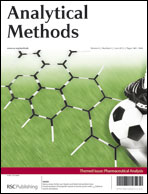Assessment of a COD analytical method based on the photoelectrocatalysis of a TiO2 nanotube array sensor
Abstract
This work mainly describes assessment of a photoelectrocatalytic method to determine chemical oxygen demand (COD) in refractory and low-concentration organics using a highly effective TiO2 nanotube array sensor in a thin-cell reactor. Twenty organic compounds, including recalcitrant organics from six categories, were used as model compounds to evaluate the accuracy of the method. The correlation between theoretical oxygen demand (ThCOD) and response COD was studied. The linear regression equation COD = α × ThCOD was obtained, where α is the slope of the regression equation representing the conformity between the actual COD value and the theoretical value. Results of the photoelectrochemical method used in the present paper show excellent conformity between ThOD and response COD for all model compounds, with α and correlation coefficient r values of 0.9903 and 0.9901, respectively. However, results using the standard dichromate method show poor conformity, with α and r values of only 0.8359 and 0.8213, respectively. Hence, we conclude that this photoelectrocatalytic method is superior to the dichromate method for determination of COD in refractory and low-concentration organics. The photoelectrocatalytic method possesses a detection limit of 0.5 mg L−1, while dichromate COD values lower than 20 mg L−1 could not accurately be detected, with the exception of sugars.


 Please wait while we load your content...
Please wait while we load your content...